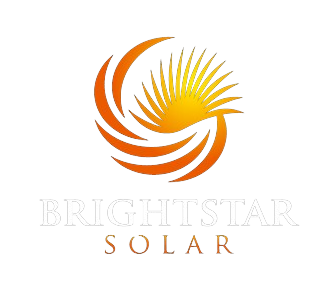Solar energy incentives in Massachusetts have never been better. Between federal and state tax credits, rebates, and SRECS, the average payback on a residential solar installation in the state is six years (for an ideal site). If you want to pursue solar power for your home or business, these incentives won’t be around forever. The time to act is now.
They are also not likely to improve in the future. Incentives and rebate programs are funded by the state and federal governments and are constantly under budgetary scrutiny. The purpose of these incentive initiatives is to spur deployment of renewable power. As more and more systems are installed, the rebates will phase out. In addition, solar manufacturers are finding ways to make components at cheaper prices and to improve the efficiency of solar photovoltaic equipment. Incentives will disappear as solar subsidies won’t be necessary to compete with fossil fuels.
But you don’t have to trust my opinion. They say history always repeats itself, right? California was the first state in this country to make large investments in solar energy. They were also one of the first to introduce a solar rebate. California’s once generous rebate has declined from $2.50 per watt to $0.35 per watt as the state has reached an installed solar capacity of more than 215 megawatts.
As many people know, Germany leads the world in solar installations, providing more than 15% of the country’s electricity needs. Its generous feed in tariff has spurred increased solar energy generation from 1.3 billion kilowatt hours in 2005 to over 5 billion kilowatt hours today. This year, German solar subsidies have been cut by 16% for rooftop installations, 15% for farmland, and 11% for open spaces – this is quicker than originally planned. Germany is realizing they don’t need generous incentives to continue investments in solar technology.
In regards to Massachusetts, there are no guarantees that incentives will stay the same. The Commonwealth Solar rebate program is in its second iteration. The price per watt rebate stepped down in its evolution to Commonwealth Solar II (CSII). The fourth and final block of CSII will come to a halt by December 31, 2010 or when funding is exhausted (whichever comes first). This means we may have a new rebate structure starting January 2011, and there’s no telling how generous the rebate will be.
The marketplace for Massachusetts Solar Renewable Energy Credits (SRECs) opened in January 2010. SRECs, or Solar Renewable Energy Credits, are tradeable certificates that represent all the positive environmental attributes of electricity generated from a solar electric system. Each time a solar system generates 1,000 kilowatt hours (1 megawatt hour) of electricity, an SREC is issued which can then be sold or traded separately. Homes or business with solar electricity-generating systems can participate in this program via an “opt-in” agreement, which guarantees participation for a set number of years. In 2010, the “opt-in” arrangement is for 10 years and can be adjusted downward by 2 years annually. You have the opportunity to receive the most benefit this year since you can sign on to a 10 year term. In addition, the Solar Carve-Out will only support 400 MW of new solar capacity in Massachusetts. Once the goal is reached, the opt-in term for all solar generators has expired, and SRECs will no longer be generated.
One other thing to consider is the uncapped 30% federal tax credit on solar investments will expire in 2016. If the federal tax credit exceeds the tax liability, the excess amount may be carried forward to the next taxable year. The excess credit can be carried forward until 2016, but it is undetermined if the unused tax credit can be carried forward after then. If you have concerns about consuming the tax credit by 2016, it may be in your best interest to move forward on your solar project sooner rather than later.
The moral of this story is if you’re interested in solar energy in Massachusetts; don’t wait to pull the trigger on the project. It is in your best interests to work with your solar contractor on completing your application for the Commonwealth Solar II rebate immediately to secure the largest incentive. Rebates are not available for do-it-yourself projects and you will have to involve a solar professional to qualify. Brightstar Solar is a licensed Massachusetts solar installer with experience working with the Mass Clean Energy Center (MassCEC) solar rebate programs. Please reach out to us if you’re interested in a complimentary solar evaluation and free estimate for your home or business in Massachusetts.








Nice entry inSolar. You could almost swap out Massachusetts for New Jersey and the article would work. We have seen rebates fall from $5.50/watt in 2005 to the current level of $0.75/watt (funds for which are nearly gone). Additionally, REC prices naturally fall and electricity prices generally go in one direction, so while you contemplate solar power, you potentially miss out on rebates and you pay your rising electricity bill.
Best of luck up there!
Pingback: Tweets that mention Hedging Your Bet on Massachusetts Solar Incentives — BRIGHTSTAR SOLAR -- Topsy.com
Pingback: Block 5 of Mass Commonwealth Solar Rebate Announced — BRIGHTSTAR SOLAR
Your article helped me a lot, is there any more related content? Thanks!
Your article helped me a lot, is there any more related content? Thanks!